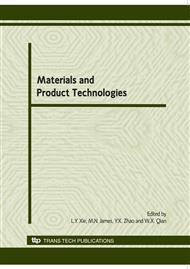[1]
Alobaid F, Postler R; Strohle J. Modeling and investigation start-up procedures of a combined cycle power plant. APPLIED ENERGY, , , , v 85 n 12 2008 pp.1173-1189.
DOI: 10.1016/j.apenergy.2008.03.003
Google Scholar
[2]
Qian Wenxue, Xie Liyang, Huang Dayan, Yin Xiaowei. Bolt Parametric Design System Development Based on ProEngineer. The Second International Conference on Information and Computing Science, Volume 1, 21-22 May, 2009: 42 - 45.
DOI: 10.1109/icic.2009.18
Google Scholar
[3]
Ertas AH, Sonmez FO. A parametric study on fatigue strength of spot-weld joints. FATIGUE & FRACTURE OF ENGINEERING MATERIALS & STRUCTURES, , , , v 31 n 9 2008 pp.766-776.
DOI: 10.1111/j.1460-2695.2008.01263.x
Google Scholar
[4]
Lin Bor-Tsuen, Chan Chian-Kun, Wang Jung-Ching. A knowledge-based parametric design system for drawing dies. International Journal of Advanced Manufacturing Technology, v 36, n 7-8, March, 2008, pp.671-680.
DOI: 10.1007/s00170-006-0882-y
Google Scholar
[5]
Kannapan Srikanth,Marshek Kurt M. Parametric approach to machine and machine element design. International Journal of Mechanical Engineering Education, v 19, n 3, Jul, 1991, pp.197-211.
Google Scholar
[6]
Billo Richard E, , Bidanda Bopaya Peternel Jim. Parametric design of countersink cutting tool. Proceedings of the Industrial Engineering Research Conference, 1993, pp.370-374.
Google Scholar
[7]
Ghosh S, Bhandari Y, Groeber M. CAD-based reconstruction of 3D polycrystalline alloy microstructures from FIB generated serial sections. CAD Computer Aided Design, v 40, n 3, March, 2008, pp.293-310.
DOI: 10.1016/j.cad.2007.11.003
Google Scholar
[8]
Slattery Kerry T, Riveros Guillermo A. A parametric template format for solid models of reinforced concrete structures. 17th Analysis and Computation Specialty Conference, v 2006, 17th Analysis and Computation Specialty Conference, 2006, p.15.
DOI: 10.1061/40878(202)23
Google Scholar
[9]
Carswell Dave, Lavery, Nick. 3D solid fin model construction from 2D shapes using non-uniform rational B-spline surfaces. Advances in Engineering Software, v 37, n 8, August, 2006, pp.491-501.
DOI: 10.1016/j.advengsoft.2006.01.002
Google Scholar
[10]
Ghosh Somnath, Li Ming, Khadke Aniruddha. 3D Modeling of shear-slitting process for aluminum alloys. Journal of Materials Processing Technology, v 167, n 1, Aug 25, 2005, pp.91-102.
DOI: 10.1016/j.jmatprotec.2004.08.031
Google Scholar
[11]
Sudarsan Rachuri, Fenves Steven J, Sriram R. D, Wang, F. A product information modeling framework for product lifecycle management. CAD Computer Aided Design, v 37, n 13, November, 2005, pp.1399-1411.
DOI: 10.1016/j.cad.2005.02.010
Google Scholar
[12]
Sudarsan Rachuri, Fenves Steven J, Sriram R.D., Wang F. A product information modeling framework for product lifecycle management. CAD Computer Aided Design, v 37, n 13, November, 2005, pp.1399-1411.
DOI: 10.1016/j.cad.2005.02.010
Google Scholar


